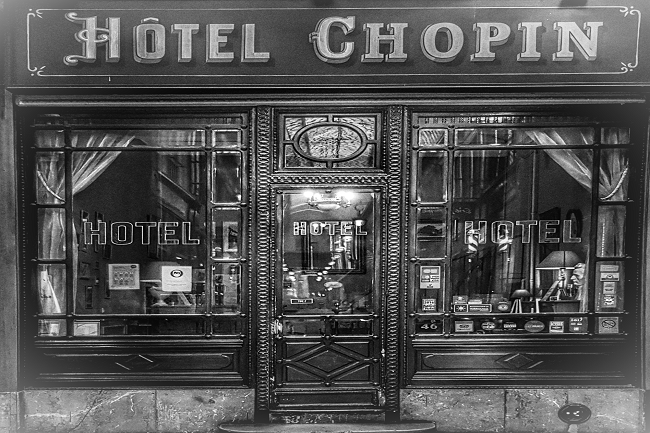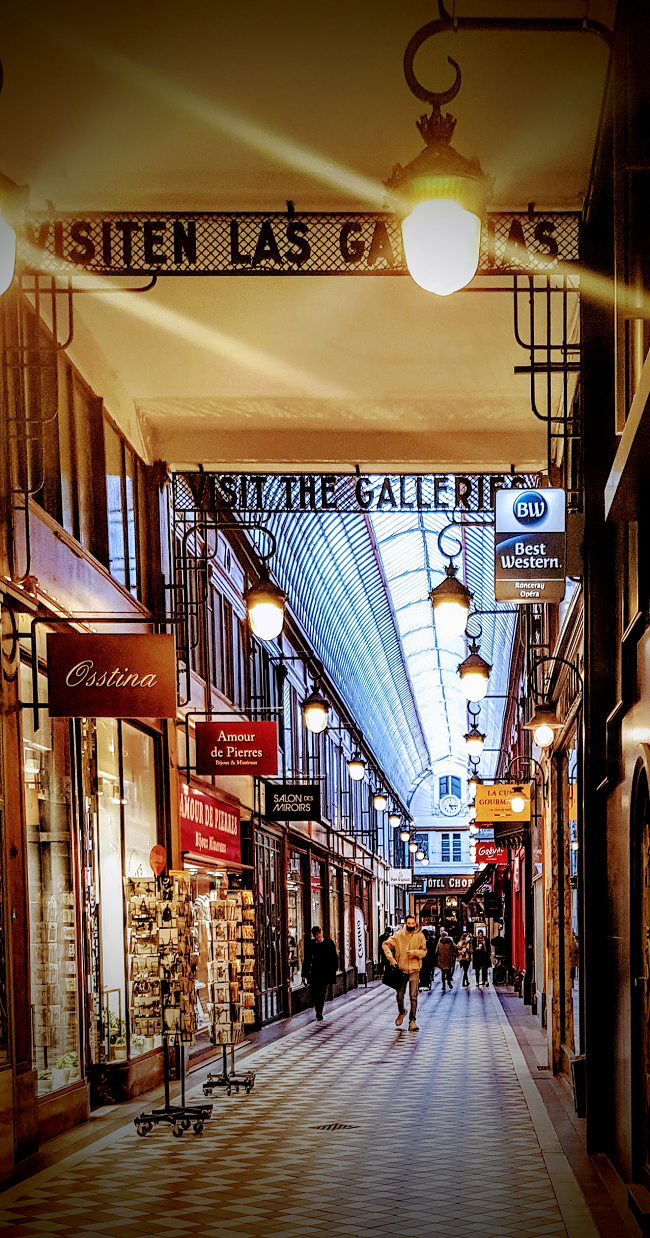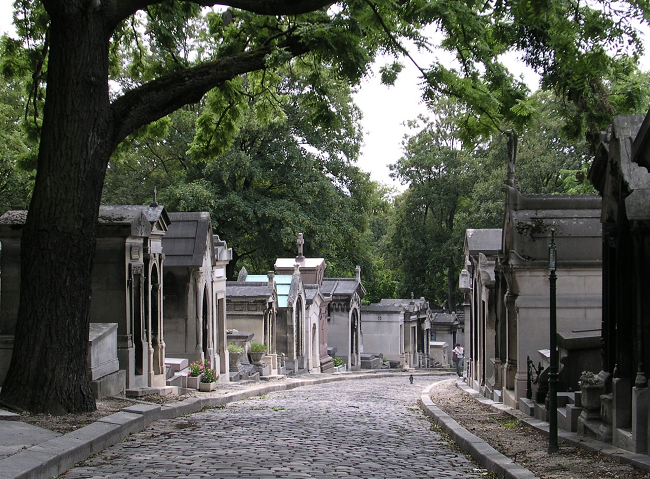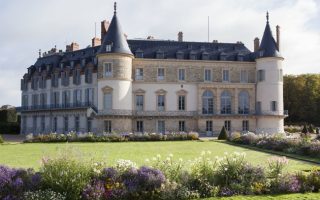A Flâneur’s Guide to Paris: Chopin and Père Lachaise

Richard Birchall has just published special editions of his very popular Flâneur’s Guides. The Best of The Left Bank & Right Bank explores the well-loved districts of Paris in a 250-page bumper edition of the book. Here is an exclusive excerpt.
CHOPIN
When it comes to Romanticism, he is, as they say, the pure drop. Born Fryderyk Franciszek Chopin, just outside Warsaw in 1810, Chopin’s father Nicolas was a teacher of French, born in the Lorraine, who proudly insisted on speaking his adopted Polish at home. Quickly recognised as a child prodigy, Chopin gave public concerts and started composing at the age of seven. He moved widely in artistic circles in his youth, traveling to Berlin and then Vienna, where he debuted on the big stage to acclaim.
Caught up in the wave of Polish emigration fleeing the November Uprising, he arrived in Paris for the first time in 1830 and was quickly taken to heart by a confraternity of fellow musicians with Robert Schumann summing up the general consensus the following year when he wrote the famous words: “Chapeaux bas Messieurs, un génie!” Chopin spent the majority of his remaining 19 years in Paris and they are amply remembered around the city and primarily on the Right Bank: there are plaques where he first livedat 27 rue Poissonnière and later at 80 rue Taitbout, and finally where he passed away in 1849 at 12 Place Vendôme.
And there is more: his study replete with Pleyel piano is reconstructed at the Salon Frédéric Chopin in the Bibliothèque Polonaise on the Île Saint Louis and, of course, he is remembered by the city with the Place Chopin in a rather unmelodramatic part of the 16th arrondissement. Chopin’s much documented and tumultuous 9-year relationship with writer George Sand can be vicariously relived at the Musée de la Vie Romantique at 16 rue Chaptal, where plaster-casts of Sand’s arm beside Chopin’s hand are a particular draw. At the Parc Monceau a large marble sculpture of Chopin playing the piano is tucked away in a corner for lovers to discover while ambling along those twisted paths, and of course fans of Liebestod will be obliged to say a prayer at Chopin’s grave in the Père Lachaise cemetery.
But perhaps the icing on the cake for true romantics is the Hôtel Chopin, hidden away from prying eyes at the end of the Passage Jouffroy, an arcade where Chopin spent many a wandering ballade during his early days in Paris; with rooms starting at around €80, it is possibly the most romantic address in the city.
Hôtel Chopin, 46 Passage Jouffroy, 10
Boulevard Montmartre, 75009
Tel: +33 (0)1 47 70 58 10.

Chopin-Passage Jouffroy © Richard Birchall
Cimetière du Père Lachaise
The undertaking business is a dead cert, with unending demand and a captive audience, particularly at the most visited resting place in the world: the Père Lachaise cemetery in the 20th arrondissement. Plots are so scarce here that the lucky few who can secure a future in the hallowed ground need to take out a lease, at the end of which the remains are moved on (a bit like certain annoying restaurants where lingering clients are asked unceremoniously to give up their table to make way for the next, potentially more interesting, punter). They say there are no pockets in a shroud but deep pockets at Père Lachaise will see customers secure 10, 30 or 50 years of relative peace and quiet.
But think about what edifying company you will keep! Jean de la Fontaine, Molière, Honoré de Balzac, Frédéric Chopin, Heloïse & Abelard, Sarah Bernhardt, Georges Bizet, Oscar Wilde, Isadora Duncan, Marcel Proust, Colette, Max Ophuls, Edith Piaf and more. The cemetery was originally known as the Cimetière de l’Est and was the first major burial ground located inside the city walls (intra muros); it was subsequently renamed after François d’Aix de la Chaise 1624-1709 (padre to Louis XIV, aka Le Roi Soleil) who lived at a parish house on the site. With 110 acres of picturesque pathways and 4,000 trees, the cemetery is equally popular with locals and first-time visitors to the city, many who make a beeline straight to the very modest grave of Jim Morrison, one of the most popular pilgrimages in the city (and in complete contrast to the small group of people who actually made it to his funeral).
Just as LA has its map to the stars, Père Lachaise has its map to fallen stars, and the tranquil setting matched with impressive tombs and monuments guarantees a consoling stroll on a mid-week afternoon for those looking to fully savour life on this side of the porous wall that separates us (for now) from our confrères who have made their home here (also for now).
Cimetière du Père Lachaise, multiple entrances at Boulevard de Menilmontant and Place Gambetta, 75020.

Pere_Lachaise_Chemin_Errazu © Peter Poradisch/Wikimedia Commons
Join Richard on October 26th for an exclusive flânerie to uncover the secrets of the Marais during a webinar hosted by FT Live. This immersive webinar will teach you about the district’s fascinating history. Become a France Today Member and sign-up to this webinar for free!
Order the special edition of A Flâneur’s Guide Paris
“A Flaneur’s Guide to The Left and Right Banks of Paris is full of insights and interesting vignettes for your next trip to the City of Light. Re-visit old haunts, try some new attractions, and explore hidden nooks and crannies, all in the hands of a veteran flaneur, brimming with wit and wile and plenty of inside tips and things to do before, during and after your stay.”
Lead photo credit : Chopin-Hotel © Richard Birchall
Share to: Facebook Twitter LinkedIn Email
More in book excerpt, Chopin, Paris, Paris History, Paris streets, Père Lachaise, walking in Paris
Leave a reply
Your email address will not be published. Required fields are marked *




